B.CCH.2124 - 2023 Greenhouse gas emissions footprint of red meat
Did you know net emissions from Australia's red meat sector have decreased by 70% between 2023 to 2005?
| Project start date: | 16 March 2024 |
| Project end date: | 10 January 2026 |
| Publication date: | 02 October 2025 |
| Project status: | In progress |
| Livestock species: | Grain-fed Cattle, Grass-fed Cattle, Sheep, Goat, Lamb |
| Relevant regions: | National |
|
Download Report
|
|
Summary
In 2023, net greenhouse gas emissions from the red meat industry were 45.8 Mt CO2-equivalents representing a 70% decrease compared with the reference year of 2005 when total emissions were 154 Mt CO2-equivalents. This decrease is primarily due to a reduction in clearing of forest and sparse woody vegetation, and an increase in vegetation growth and carbon storage.
Objectives
• Calculate greenhouse gas emissions from the Australian red meat industry using data from the 2023 Australian National Inventory (GWP100, AR5 values), including:
o sources of emissions
o contribution to total national emissions
o emissions by commodity; cattle, sheep meat and goats
o emissions by sector; farm, feedlot, and processing
• calculate total greenhouse gas emissions from the Australian red meat industry using GWP20, GTP100, GTP20, direct methane, GWP* and radiative forcing
• report livestock numbers and red meat production volumes.
Key findings
• greenhouse gas emissions attributed to the red meat industry in 2023 were 45.8 Mt CO2-e
• emissions attributed to the red meat industry have decreased by 70% (108 Mt CO2-e) since 2005
• enteric methane fermentation remains the largest source of emissions
• emissions from the industry are partiallly balanced by removals from grazing landscapes, with grazing land a net sink for emissions since 2021
• emissions have increased since 2021 due to a combination of increase in national herd/flock size and emissions from LULUCF
• storage of carbon in grazing landscapes is sensitive to climatic conditions, and continued progress towards net zero goals will require a reduction in animal emissions, particularly enteric methane.
Benefits to industry
Annual reporting enables understanding of the red meat industries net emissions profile and contribution to national emissions, and can inform research and development priorities, as well as other strategic actions.
MLA action
NA
Future research
Limitations of the method used to attribute emissions from the National Inventory to the red meat industry have been identified based on the Common Approach to Sector-Level Greenhouse Gas Accounting for Australian Agriculture report (Sevenster et al. 2023).
Research and funding to address these limitations would increase the accuracy of the red meat industry greenhouse gas footprint.
• Emissions attributable to the red meat industry in this report are incomplete due to data limitations, with specific gaps identified in the chart of accounts in Appendix 8.2. Of the emissions not included, emissions from transport should be prioritised as they are likely to be the largest source of additional emissions.
• Emissions from energy and the area of cropland used to support cattle in feedlots are based on historic life cycle assessments (Wiedemann et al. 2017; Wiedemann et al. 2016; Wiedemann et al. 2015). The efficiency of these systems is likely to have changed since the assessments were completed. More current data would enable these improvements to be captured in reporting of emissions.
• Data on where and how goats are managed is scarce. Better data on goat populations and the volume of goat meat produced would enable more complete reporting of emissions associated with the goat industry.
More information
| Project manager: | Julia Waite |
| Contact email: | Reports@mla.com.au |
| Primary researcher: | CSIRO LIVESTOCK INDUSTRIES |


